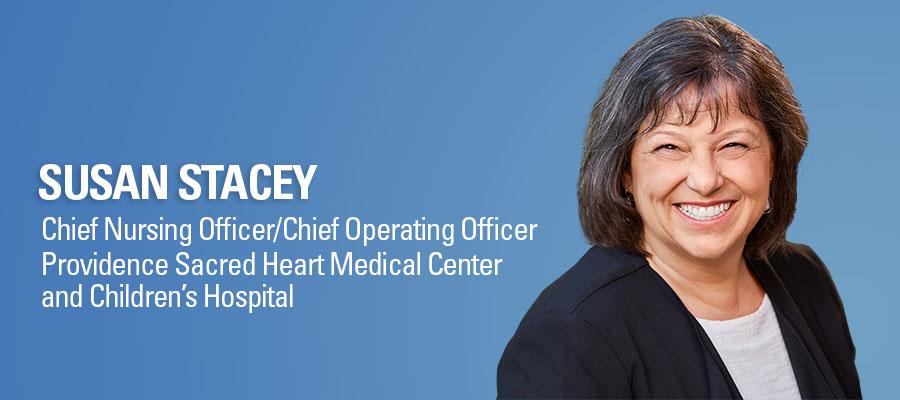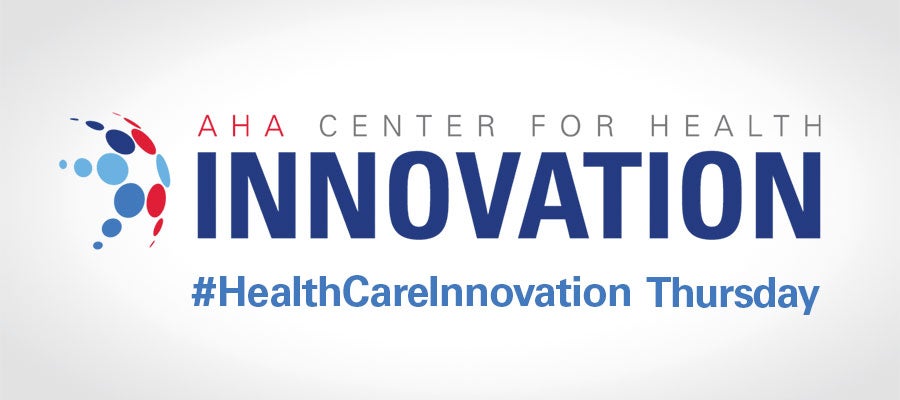What the COVID-19 Pandemic Has Taught Me


Throughout my 35-plus years working in a hospital environment, first as a nurse, then a nurse leader and now the chief nursing officer for a 700-plus-bed hospital, I have humbly learned a lot. Our front-line caregivers are our greatest source for what works and what doesn’t — with many life lessons to be learned as we go.
As health care leaders, we likely can agree that some of the most difficult situations are the ones in which we learn how to improve our policies and procedures. Those can be painful, but if we’re open to it, we can listen and learn how to do things better and even learn something about ourselves as leaders. That is why I am glad to be part of the AHA Living Learning Network (LLN), which has connected me with colleagues across the nation to share our experiences.
At Providence Sacred Heart Medical Center in Spokane, Washington, we were involved very early in this pandemic. In February, four cruise ship passengers who tested positive for COVID-19 were sent to Sacred Heart to recuperate in our Special Pathogens Unit. As any hospital team does when asked, we sprang into action. There were so many moving parts, and additionally, national media attention shone on the hospital as we navigated very early patient care for a new, highly contagious respiratory virus.
We are still caring for the majority of patients with the coronavirus in our community, and we learn more every day. Looking back on many months of dealing with COVID-19, here are some lessons I learned, which may resonate with you too.
Who’s right doesn’t matter. What’s right does. Early on, it was evident that titles and where people sit on the organizational chart were less important than specific expertise and willingness to try new things. We had nurses who were infection prevention experts advising physicians and administrators, and in some cases, regulatory agencies advising about preventing infections. Our front-line nurses, physicians and therapists had amazing innovations when we let them create the best practices. For example, they created hot/warm/cold zones on the unit to help preserve personal protective equipment (PPE) efficiently, quickly developed a team system to prone patients when needed, minimized exposure to the virus through creative means, and more. My job, at times, was to get out of the way and let it happen.
Simple and easy are very different things. There is nothing simpler than wearing a mask to minimize the spread of a deadly disease. Yet I was amazed at how difficult it was to implement mandatory masking in a short time. It continues to be a challenge even today with our caregivers and visitors.
The task ahead of us is to normalize this current work and find the path to move from crisis management to care management, from incident command to recovery and from abnormal to the new normal — at least for now.
Trust the experts — but not everyone who speaks is an expert. We are blessed in this country and throughout our health care system to have amazing experts. However, it has been frustrating to see social media question basic science. Even within our health care organization, some amazingly smart people act from a place of fear over facts.
We are at our best when we are giving back to others. One of my favorite days during this crisis was the past summer when my team paid it forward to another hospital and shared some positivity. Nurses and therapists who work on our COVID-19 unit packed a large box with cookies, candies, pictures (wearing full PPE) and notes of well wishes and sent it to another COVID-19 unit at a different hospital in our state. My team was so uplifted to give to another group and share this connection.
Youth has its benefits. Thank goodness for our technologically savvy younger team members who quickly educated us all on how to interact through telemedicine, online meeting platforms and virtual interactive programs. Many of us learned quickly how to interact in a virtual world — and much of that world is here to stay.
Age has its benefits. In a world of evidence-based practice, having an infectious disease that was not well understood was frightening to clinicians who were accustomed to relying on research to guide their actions. Providers and clinicians with more experience were far more comfortable providing care in this gray zone of the unknown without formal studies to look to for support. Thank goodness this group of pioneers was willing to try new things — and use old modalities, like proning.
You cannot live in crisis forever, and we must redefine normal. The task ahead of us is to normalize this current work and find the path to move from crisis management to care management, from incident command to recovery and from abnormal to the new normal — at least for now. COVID-19 is not an aberrancy: It is our reality, and we need to respond in a more matter-of-fact manner.
Taking care of the people who take care of the people is critical. I think most of us — as executives, financial officers, strategists, academicians and more — realized we were quickly deemed “nonessential.” For me, as a nurse, this was a welcome reminder that the reason we are here is for patients. The best way we can support quality patient care throughout the continuum is to support the amazing individuals who provide direct care every day. They are tired, they are stressed, and they are there when the patients’ families cannot be. We have a solemn honor and obligation to take care of our front-line people physically, spiritually and emotionally. But also remember: We all are taking care of someone, whether at home or work, so we must make sure to care for ourselves along the way too. That is the key to resilience.
So, what are your learnings? What will we take forward into 2021 and, most importantly, the years beyond? My colleagues and I in the LLN encourage you to take a moment to pause and reflect on the past year — and let’s all learn important lessons together.
Susan Stacey is chief nursing officer/chief operating officer at Providence Sacred Heart Medical Center and Children’s Hospital in Spokane, Washington. Providence Sacred Heart Medical Center is a member of AHA’s Living Learning Network (LLN), a peer-to-peer community of health care professionals dedicated to helping hospitals and health systems recover, rebuild and reimagine health care.
The opinions expressed by the author do not necessarily reflect the views of the American Hospital Association.

